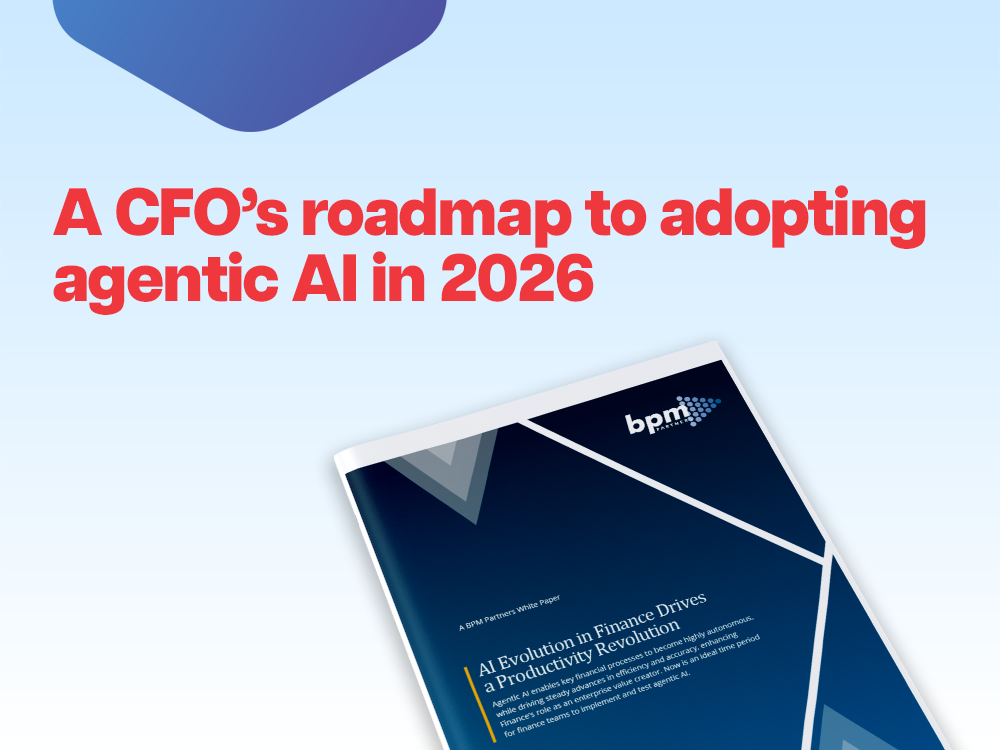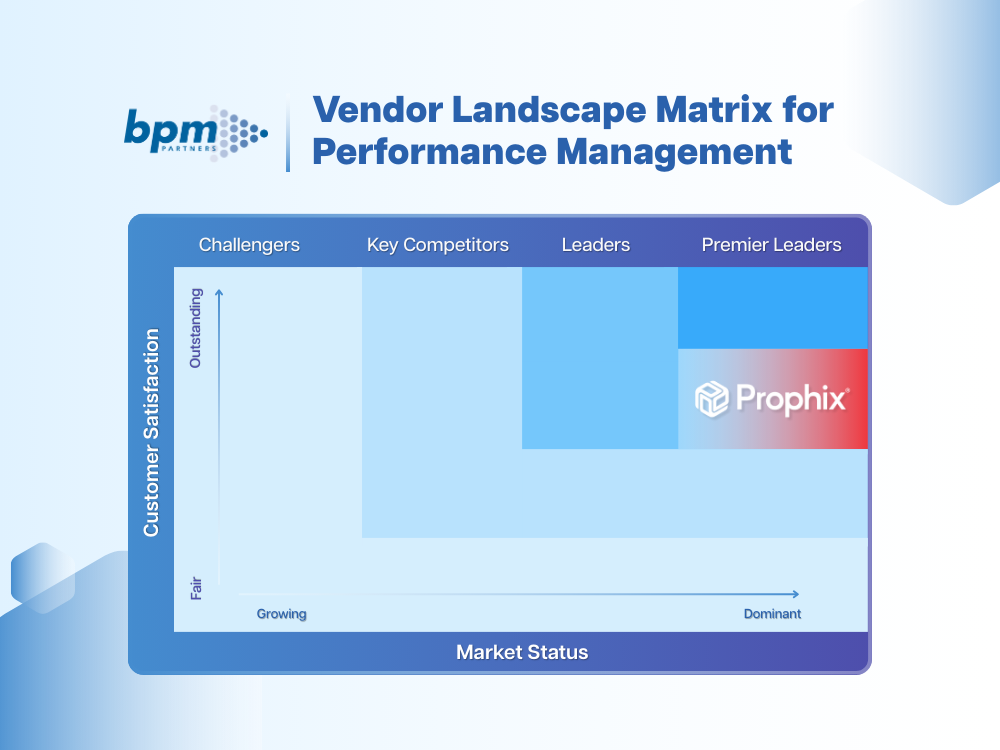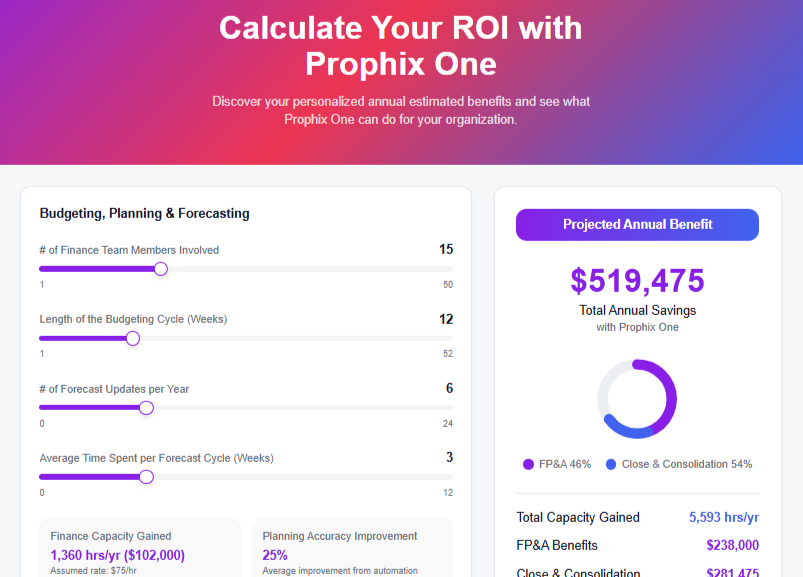Download Analyst Report
Excel-based FP&A platforms vs integrated financial performance software
Compare Excel-based tools to integrated planning platforms to find the right fit for your finance team.
July 29, 2025When it comes to upgrading your financial planning and analysis (FP&A) capabilities, most teams face a familiar crossroads: stick with an Excel-based solution that feels familiar or move to an integrated financial performance platform that offers a broader range of tools and automation.
An Excel-based FP&A platform uses Microsoft Excel as its foundation. It mirrors the Excel interface finance teams know and trust, often embedding native formulas, spreadsheets, and visuals directly into the software. These tools can connect data sources, run reports, and automate workflows, but Excel remains the core engine.
An integrated financial performance platform, on the other hand, is built independently from Excel. It centralizes your data, automates planning, reporting, and forecasting tasks, and provides a purpose-built experience for finance users. With solutions like Prophix One, you don’t lose Excel altogether. You can still access data through Microsoft 365 integrations, but you gain a modern, scalable environment that’s purpose-built for performance.
The difference? Excel-based platforms replicate the look and feel of spreadsheets. Integrated platforms reimagine the entire process.
Excel-based FP&A software vs integrated financial performance platform
Feature
Excel-based FP&A platform
Integrated financial performance platform
User interface
Native Excel interface with added functionality.
Custom-built web interface that has Excel familiarity but isn’t built on it.
Ease of adoption
Minimal training is needed for Excel users.
A moderate learning curve but dedicated customer success managers, training courses, and resources help with adoption.
Data integration
Connect to ERPs, CRMs, HRIS via connectors or APIs, varies by vendor.
Native integrations and unified data model for seamless data flow.
Modeling flexibility
Full Excel modeling flexibility retained (formulas, links, templates).
Custom modeling, but you can also bring your data back into Excel with the Excel add-in and model in a familiar environment.
Workflow and automation
Adds workflows (like approvals, tasks) to Excel.
Built-in workflow automation across planning, approvals, and reporting.
Collaboration
Supports Excel-based collaboration with access controls and data sync.
Platform-wide collaboration with shared tasks, dashboards, and real-time updates.
Governance and security
Varies by vendor, but the controls are layered over Excel.
Centralized access controls, role-based permissions, and built-in governance.
Scalability
Scales with the team and data volume but limits due to Excel performance.
Designed to scale large datasets, growing teams, and multiple business units.
Reporting and dashboards
Reports are built in Excel or extended via Power BI or in-app visualizations.
Native dashboards and real-time analytics built into the platform.
Implementation
Quicker deployment; low training required.
Flexible implementation can be up and running in as little as 8 weeks, without a disruptive transformation project.
Total cost of ownership
Lower initial costs, faster ROI for SMB/mid-market.
Competitive fixed pricing with faster time to value through pre-packaged implementations that scale as your business grows.
Best for
Teams who want to modernize their FP&A without giving up Excel.
Teams ready to scale FP&A with an integrated approach that supports future growth and structured planning.
FP&A software comparison: Key factors finance leaders should evaluate
Familiarity vs flexibility
Excel-based FP&A software appeals to teams that want to move quickly without leaving behind a familiar interface. These tools layer FP&A functionality on top of Excel, so finance teams can model and plan in an environment they already know. That familiarity can accelerate time to value especially for smaller teams, but it often comes at the cost of long-term flexibility. As planning needs evolve, Excel-based platforms can become harder to govern, more difficult to scale, and increasingly dependent on manual processes.
Integrated financial performance platforms offer a more flexible path forward. While they require some onboarding, they deliver a centralized structure that reduces versioning issues and supports consistent workflows across teams. Solutions like Prophix One strike a balance: you can start fast with an FP&A solution, access your data in Excel through the Microsoft add-in, and scale into new use cases without starting over. It’s not a quick fix; it’s a future-ready foundation.
Structure and scale
Excel-based FP&A software can support growth to a point, but it relies on workarounds to keep up with increasing data complexity, multiple business units, or enterprise-level planning needs. As teams expand, Excel’s limitations start to show from performance issues to challenges maintaining consistency across collaborators. Scaling becomes more time-consuming, and teams may find themselves layering on more tools just to keep things running.
Integrated financial performance platforms like Prophix One are designed to scale from the start. Centralized data, built-in governance, real-time collaboration, and automation all work together to reduce manual effort and support structured growth. And unlike traditional platforms that require months of implementation, Prophix One can go live in as little as 8 weeks. From there, teams can expand into areas like workforce planning or forecasting without reimplementation. You start with what you need today and scale as you grow.
Automation and workflow management
Excel-based FP&A tools typically layer workflows on top of spreadsheets adding approvals, task management, and process tracking directly into Excel. While this can provide some structure, it often requires manual effort to maintain, especially as complexity grows. For example, managing dependencies or coordinating inputs across teams may still involve email reminders or outside tools.
By contrast, an integrated financial performance platform like Prophix One builds workflows directly into the platform. You can automate processes end-to-end, from budget submissions to approvals to reporting – all without relying on external tools or constant oversight. Finance teams can set up workflows once and let them run in the background. Just as important, the ownership of those workflows stays with finance (not IT), so teams can make changes quickly and stay agile as business needs evolve.
Integration with source systems (ERP, CRM, HRIS)
Excel-based FP&A software often relies on third-party connectors or middleware to sync with critical business systems. That can mean more setup, more points of failure, and more maintenance to ensure data flows correctly between Excel and your ERP, CRM, or HRIS. The experience and stability can vary by vendor, and finance teams may still need IT support to troubleshoot or maintain integrations.
Integrated financial performance platforms like Prophix One are designed to connect directly with leading systems such as NetSuite, Microsoft Dynamics, Sage Intacct, Salesforce, and more. With built-in connectors and a shared data model, data flows automatically across your budgets, forecasts, and dashboards. Once set up, integrations work in the background to keep financial data consistent and current – no manual data pulls or reformatting required. And because the platform is built for finance, your team can manage these connections with minimal IT involvement.
Customization and flexibility
Excel-based FP&A software gives finance teams flexibility by keeping them in the tools they know best. The familiar interface allows users to build models using native Excel functions, templates, and formulas. But that flexibility often comes with limits. Complex customizations may require external workarounds or added manual effort, especially as business needs evolve. It also means teams are bound by Excel’s inherent constraints, version control, performance issues, and scalability concerns.
Integrated financial performance platforms like Prophix One offer both structure and flexibility. While they aren’t built on Excel, they do provide a seamless way to work with Excel with the Microsoft 365 Add-in. This lets users model in Excel when needed, while still benefiting from the power and scale of a connected platform. Teams can start with pre-built templates and planning modules, then customize based on their needs without sacrificing governance or performance. It’s flexibility with guardrails, so finance teams can stay agile while avoiding the pitfalls of spreadsheet-based planning.
Total cost of ownership
On the surface, Excel-based FP&A tools may appear more cost-effective. The familiar environment means less training and potentially faster onboarding, which can translate into quicker time to value especially for smaller teams or businesses just starting their FP&A journey. But over time, costs can add up. Scaling these tools often requires additional licenses, more customization, and potentially external support to manage growing complexity.
Integrated platforms like Prophix One take a longer-term view. Teams can get up and running in as little as 8 weeks, including implementation and the essential capabilities needed for modern planning. As your business grows, you can expand into other planning areas like workforce planning or scenario modeling without the need for re-implementation. That means predictable costs, faster ROI, and a solution that scales your business from day one.
When to choose an Excel-based FP&A platform
For finance teams that rely heavily on Excel and want a faster path to planning, an Excel-based FP&A platform can be a practical choice. These tools are designed to enhance what users already know, building on the familiarity and flexibility of spreadsheets without a steep learning curve. They’re ideal for smaller teams or organizations looking for a quick solution that integrates with existing Excel models, and for those who want to modernize without overhauling their workflows.
If your team is looking for something that feels like Excel but offers added structure, collaboration, and some automation, Excel-based platforms may offer the speed and comfort you need to get started.
When to choose an integrated financial performance platform
For growing finance teams ready to move beyond the limitations of spreadsheets, an integrated financial performance platform offers a more scalable, future-ready solution. These platforms are purpose-built for structured planning across departments and business units. They centralize data, streamline workflows, and provide greater control over security, governance, and reporting.
Integrated platforms are best suited for mid-market or enterprise organizations that need more than just quick wins. They need a foundation that will scale with them. With solutions like Prophix One, teams can start with a focused use case and expand as needed, without having to reimplement or rethink their entire system later on.
Conclusion: Choosing the right FP&A platform for your finance team
Both Excel-based FP&A platforms and integrated financial performance platforms offer distinct advantages. It ultimately comes down to your team’s needs and future plans. If your finance team is deeply rooted in Excel and looking for a familiar, fast-to-deploy solution, an Excel-based platform could be a solid fit.
But if you’re planning long-term growth, need enterprise-grade controls, or want to unify planning across your business, an integrated platform gives you the structure and scalability to get there without having to give up Excel entirely.
Book a demo to get started with FP&A Plus today.





